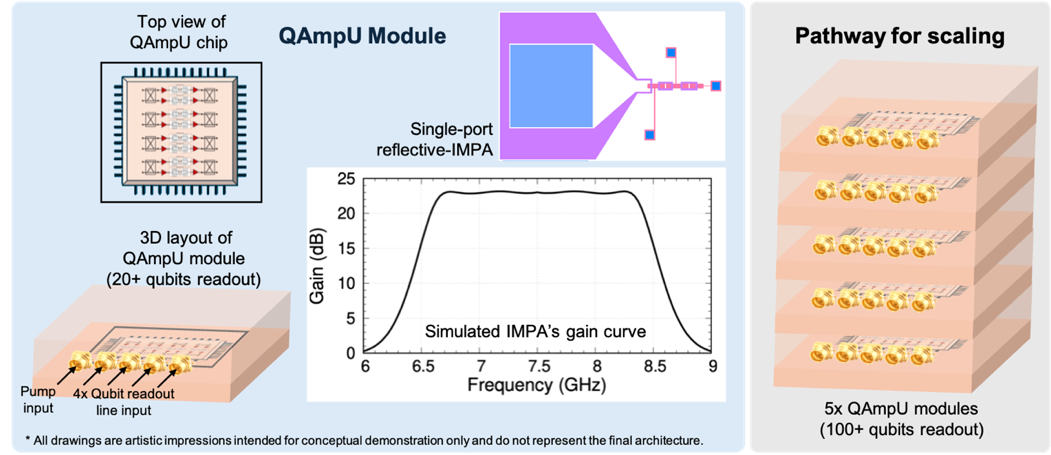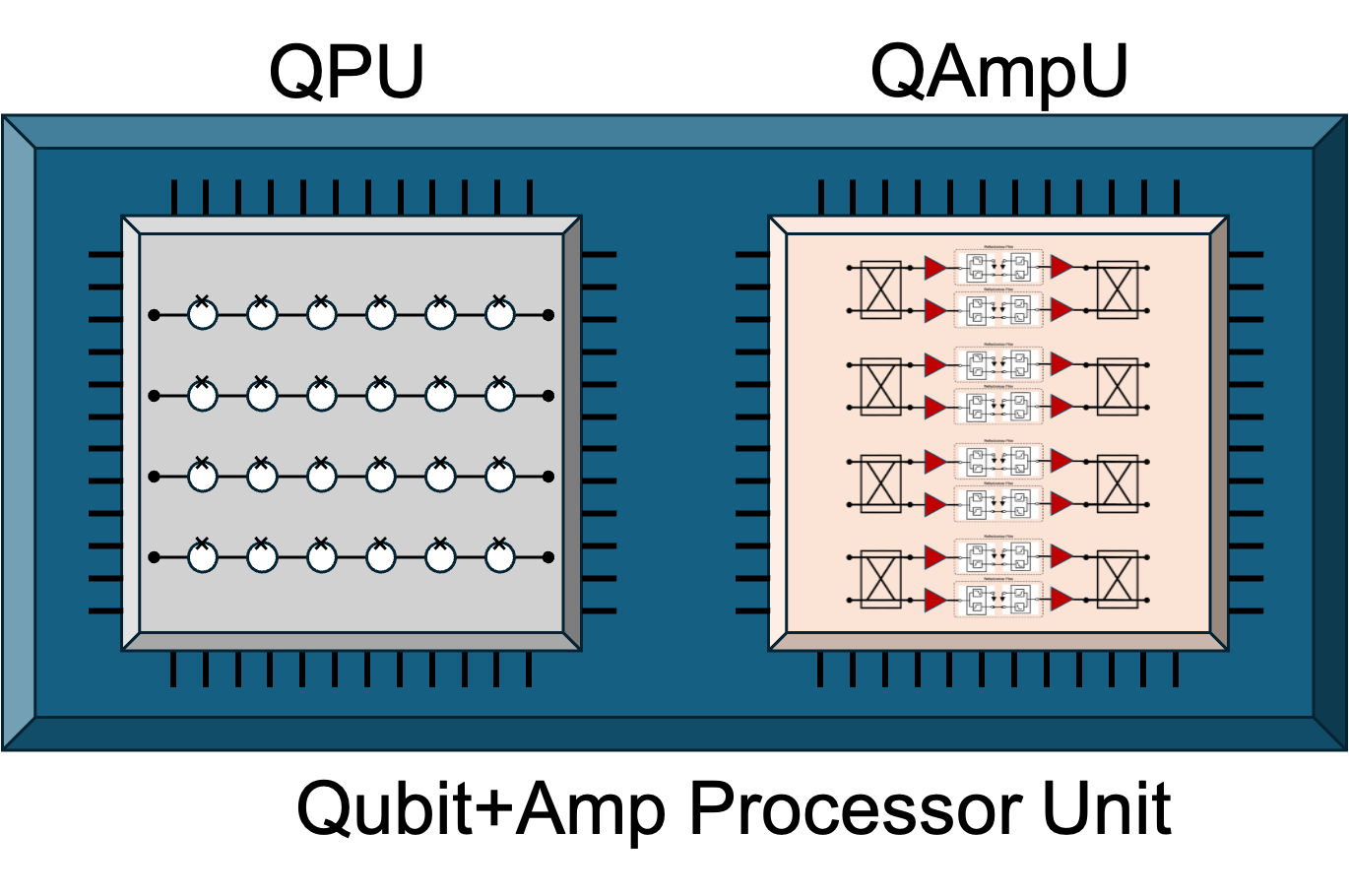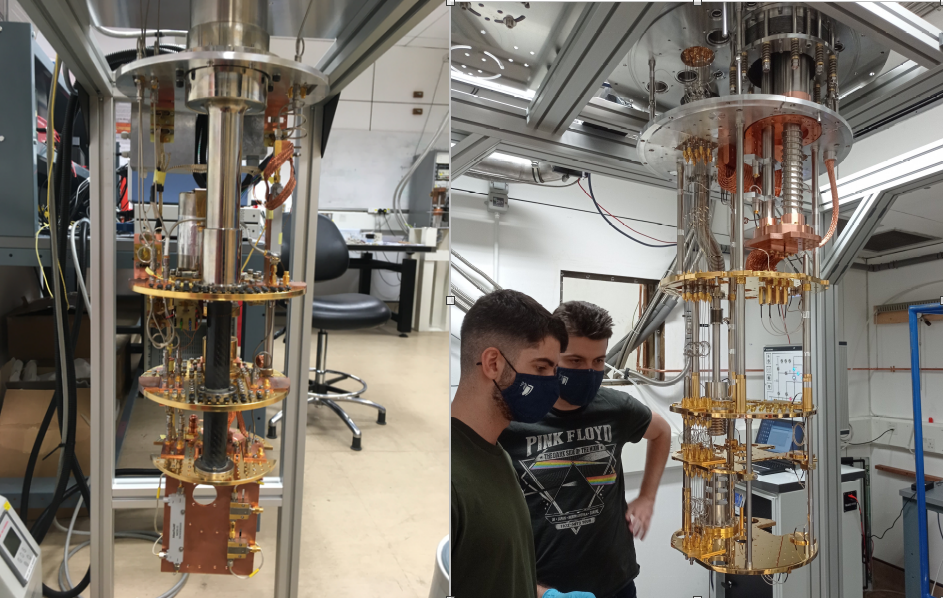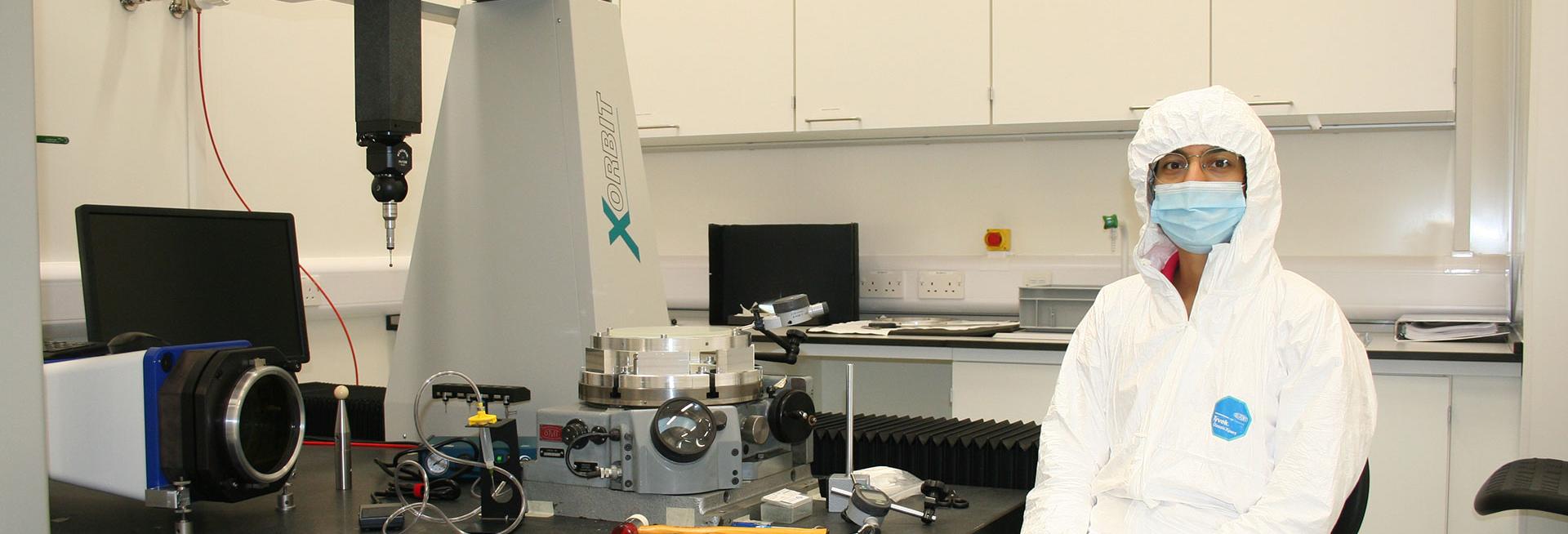Developing the Next Generation of Millimetre/Sub-Millimetre Astronomical Heterodyne Array Receivers
Supervisor: Boon Kok Tan
The millimetre (mm) and sub-millimetre (sub-mm) wavelength regime is crucial for advancing our understanding of the Universe. Roughly half of all the energy generated by star formation and black hole accretion over cosmic history has been absorbed by dust and re-radiated as thermal emission in these bands. Observations at these wavelengths are therefore key to unlocking fundamental questions about planet formation, star formation, galaxy evolution, and the large-scale structure of the cosmos.
Breakthroughs such as the first direct image of a black hole have been made possible by the remarkable sensitivity of Superconductor–Insulator–Superconductor (SIS) heterodyne receivers, operating close to the quantum noise limit. These receivers are essential to leading observatories including the Event Horizon Telescope (EHT), the Atacama Large Millimetre/submillimetre Array (ALMA), and major far-infrared space missions. Yet, despite their success, current systems are limited; most facilities around the world still rely on single-pixel receivers.
Upgrading from single-pixel to multi-pixel SIS receivers will revolutionise mm/sub-mm astronomy. Multi-pixel focal-plane arrays enable vastly faster mapping of extended astronomical objects, turning one telescope into the equivalent of many, at a fraction of the cost. This technological leap will power major future projects e.g.,
- The James Clerk Maxwell Telescope (JCMT), the largest sub-mm telescope in the world, upgrading its decade-old systems;
- AtLAST – a next-generation, 50-metre-class sub-mm telescope planned for the Atacama Desert;
- ALMA 2040 upgrade with large FPA array – a major upgrade aiming for orders-of-magnitude faster mapping and higher resolution; and
- LETO, an upcoming ESA-led far-infrared space mission proposal led by Oxford Physics.
Apart from its astronomical applications, the developments envisioned in this DPhil project will also contribute to:
- Astro-particle physics experiments at CERN, investigating the nature of jets from black holes; and
- The potential detection of dark matter particles in the mm/sub-mm wavelength range.
We have already built experimental systems to test a suite of SIS mixers covering frequencies from 160 GHz to 950 GHz. In this project, we aim to develop a medium-sized, 25-pixel heterodyne array with advanced capabilities to separate incoming astronomical signals into two orthogonal polarisation states and two distinct sidebands—effectively increasing observational capability by several orders of magnitude compared with a single-pixel receiver.
This system is equivalent to a 100-pixel heterodyne array by traditional standards but offers additional polarisation and sideband-separating capabilities—a feat that has not yet been demonstrated. If successfully implemented, it would represent the most powerful heterodyne array ever built. Our ultimate goal is to advance this technology to the thousand-pixel scale, in preparation for the ALMA 2040 upgrade and AtLAST, the largest single-dish sub-mm telescope ever proposed, currently under consideration for construction in the 2030s–2040s.
We are seeking a student to join this exciting venture. The project will involve developing a 25-pixel, dual-polarisation, sideband-separating prototype array receiver and upgrading the existing experimental setup to evaluate its performance. The student may also have the opportunity (if it arisen) to participate in commissioning the demonstrator array receiver at the James Clerk Maxwell Telescope (JCMT) in Hawai‘i and/or the AMT in Namibia.
This project is ideally suited to a student who enjoys hands-on instrument development, from detailed engineering and laboratory experiments to data analysis, and who is also enthusiastic about coding, theoretical work on quantum sensors, superconducting electromagnetism, and advanced astrophysical instrumentation.
Working within our state-of-the-art cryogenic detector laboratory, the student will benefit from well-suited facilities and close support from engineers, postdoctoral researchers, and senior DPhil students, as well as access to a wide range of commercial and custom software tools for research.
References:
- https://iopscience.iop.org/article/10.1088/1361-6668/acca51/pdf
- https://ora.ox.ac.uk/objects/uuid:d19a2b82-b5b9-416f-b098-ea4bd4d96ed6/files/smg74qn32h
- https://ora.ox.ac.uk/objects/uuid:498c71d6-2b32-4ff3-b9ec-b7afed600c35/files/ssj1394080
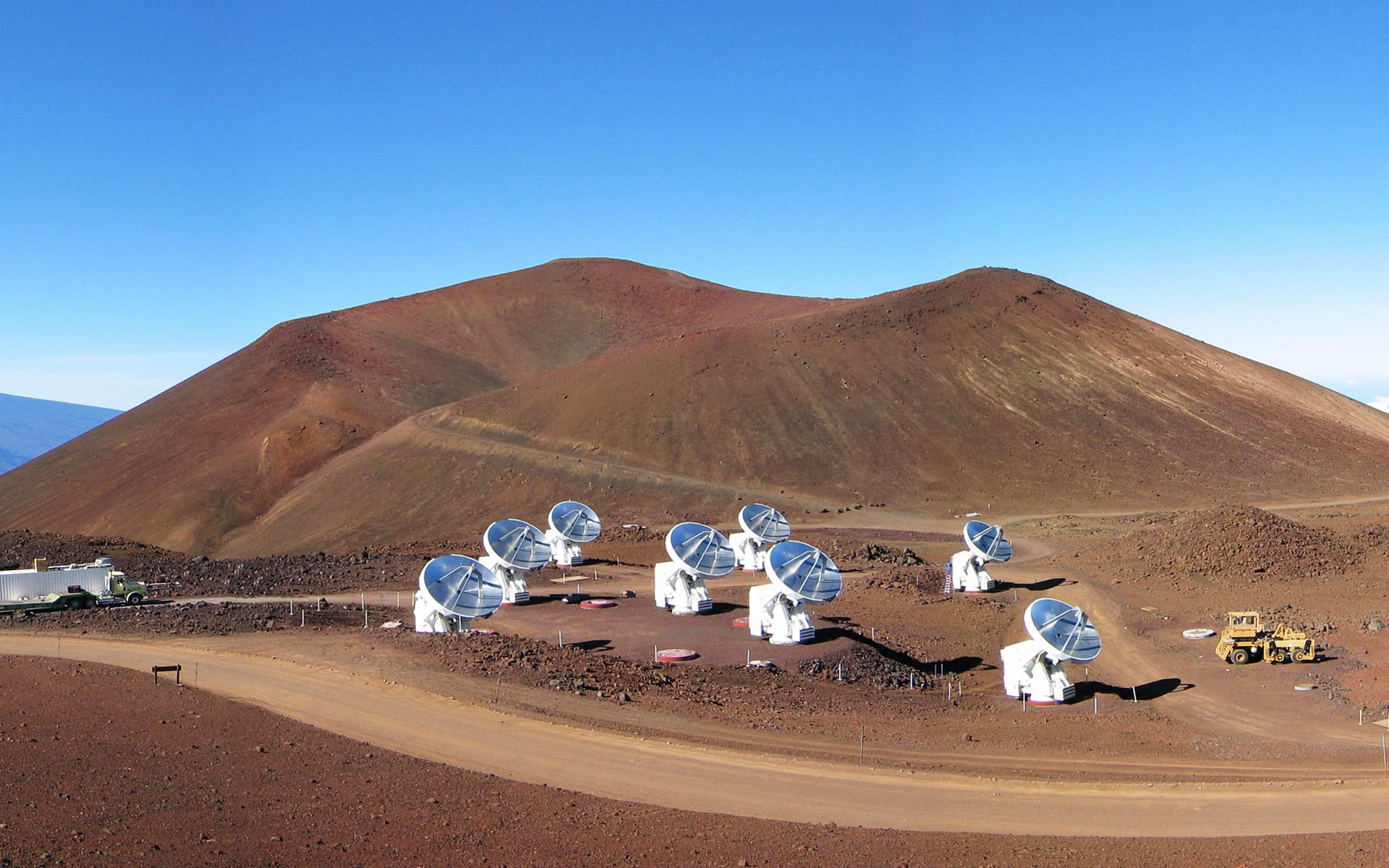
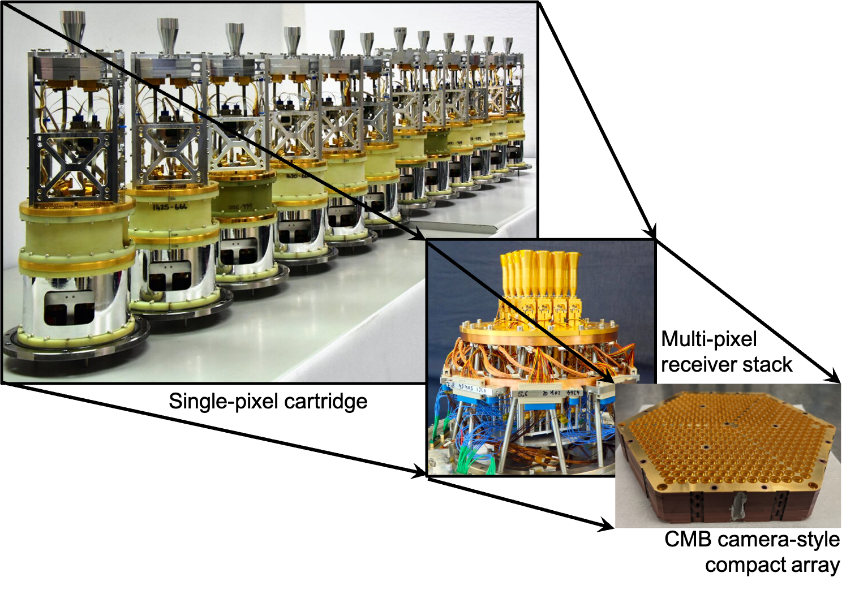
Science From the Moon
Supervisors: David DeBoer, Kris Zarbadami, Neil Bowles
We uniquely rely on radio telescopes to understand the bulk of baryonic matter in the early Universe and the evolution of the Universe across early Cosmic times. There are two unavoidable limitations to our exploration of the Cosmos with terrestrial-based radio telescopes:
- the prevalence of interfering radio transmissions from human activity, and
- the Earth’s ionosphere and atmosphere, which are opaque or disruptive to many important radio frequency ranges.
These limitations are overcome by reaching above the atmosphere and beyond Earth, a capability that, to date, has generally been the exclusive purview of expensive, government-funded space-based “Great Observatories”.
However, we are now on the cusp of a new era, with cost-effective and opportunity-laden access to space (including the lunar surface) becoming a reality. Such unfettered access will enable disparate groups to send instruments there, bringing about a transition from Earth-based observatories to space-based and cislunar telescopes (Fig. 1). Although this shift provides exciting opportunities for new science, it will also introduce sources of radio frequency interference (RFI) to the quietest remaining location to which we have access: the lunar Farside. Measurements from a generally RFI-free environment must be taken before the lunar skies have a multitude of orbiters.
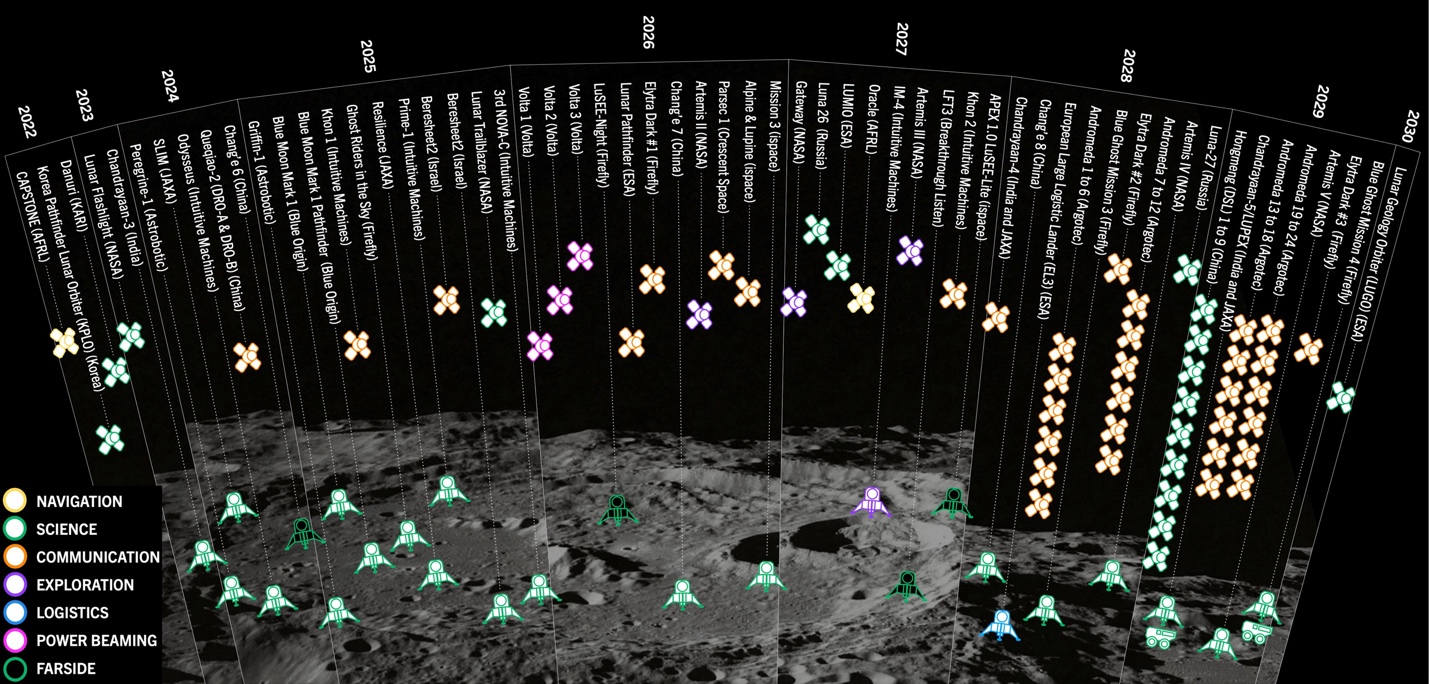
One mission in the planning stage is the Lunar Farside Technosignature and Transients Telescope (LFT3). Being led out of Oxford, this mission would seek to arrive on the lunar farside surface before 2030, to take unique-in-history measurements from 1 - 2700 MHz.. The science case is wide and spans technosignatures, transients, cosmology and lunar studies. This project would explore instrumentation for scientific outcomes for LFT3 and any potential “ride-along” instruments. This could include all mission aspects as well as foundational and preparatory science and instrumentation. The overall goal is science from the Moon, which also includes regolith studies and operations from the Moon. Specifically, this project would work with the LFT3 instrument design and strive to maximize the scientific impact of the data to be collected from the Moon at this unique time.
CMB B-mode Polarization: Commissioning and early observations with SO:UK
Supervisors: Angela Taylor, Mike Jones, Jamie Leech
The search for the signature of inflation in cosmic microwave background polarization measurements is ont of the most important topics in observational cosmology. The UK has joined the Simons Observatory (https://simonsobservatory.org), an international collaboration to detect the CMB B-mode polarization from a high-altitude site in Chile. We are building two Small-Aperture Telescopes (SATs) to join the three SATs already built in the US and operating on site, and one being built in Japan. There is also a Large-Aperture Telescope (LAT) to provide higher resolution data essential for removing the effects of gravitational lensing from the CMB. The UK SATs are planned to be deployed in late 2026 just as this DPhil project starts. We are looking for a DPhil student to take part in the deployment and commissioning of the UK SATs, travelling to the site and helping to develop the calibration and data verification procedures, and then taking part in the operations and data analysis. Oxford already has a significant effort in analysing data from the existing SO telescopes, and we are designing and building the data readout system for the UK telescopes, so we have a unique perspective on the data flow from raw detectors to final science results. The student will be joining a large and well-organised international collaboration, but will have the opportunity to make significant individual contributions to this major project.
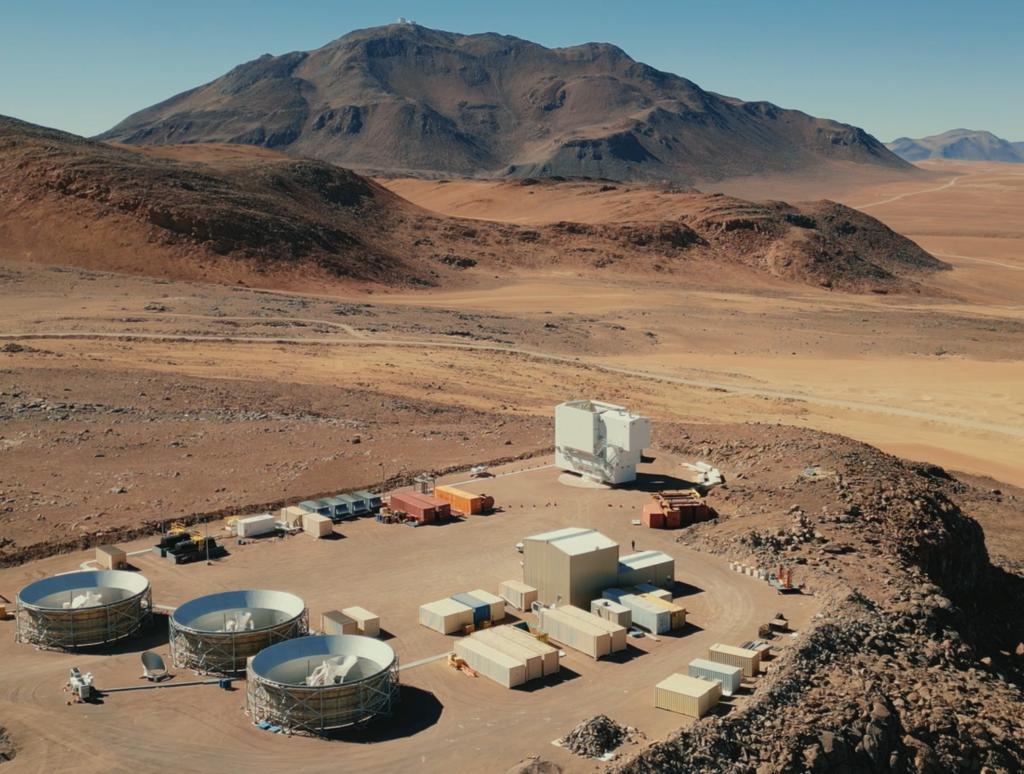
Modular Quantum-Noise Limited Amplifier Arrays for Scaling up Superconducting Qubit Platform
Supervisor: Boon Kok Tan
Microwave quantum-limited amplifiers (QLAs) operate at the fundamental noise limit set by quantum mechanics. They have played a pivotal role in achieving readout fidelities above 99% for single- and two-qubit gates in superconducting quantum computing (QC) platforms, and ultra-sensitive fundamental physics experiments such as astronomy, dark matter search and neutrino mass determination efforts. These advances have enabled major milestones such as the first demonstrations of quantum error correction (QEC) codes (Nature 614, 676–681, 2023), bringing us closer to fault-tolerant quantum computing. Because QEC critically depends on high-performance qubit readout, scalable QLA technology is essential for the future of quantum computing.
Although substantial global effort has gone into scaling quantum processing units (QPUs) by increasing qubit numbers, progress in scaling the accompanying cryogenic QLA systems has been comparatively slow. This project aims to close that gap. Building on over seven years of QLA research at the University of Oxford, we will develop a new, scalable QLA architecture and demonstrate a modular cryogenic readout prototype capable of supporting 20+ qubits, with a clear roadmap toward systems exceeding 100 qubits.
The project will focus on designing and realising an impedance-matched parametric amplifier (IMPA)-based QLA. Current existing QLAs typically require bulky housings and multiple off-chip microwave components, which increase footprint, introduce loss, and ultimately limit scalability. To overcome these challenges, we propose to develop a Quantum Amplifier Array Unit (QAmpU), a compact IMPA-based module that integrates multiple QLA chains with on-chip microwave circuitry for efficient pump and signal coupling, pump rejection, and reverse isolation. Each QLA chain will target the readout of 5–7 qubits, enabling simultaneous readout of 20+ qubits in a minimal footprint.
In parallel, the project will explore advanced packaging strategies for the QAmpU, working closely with mechanical and electrical engineering teams at Oxford. The goal is to produce a robust, modular, and plug-and-play cryogenic unit. Multiple QAmpUs can be integrated within a single cryostat, providing a scalable path to systems with 100+ qubits. Beyond quantum computing, scalable QLA-based microwave readout has wide applications in dark matter searches, satellite communications, as well as astronomical applications from radio to X-ray observations.
Our laboratory has already established several experimental platforms for testing QLAs at frequencies up to 40 GHz. We are now seeking a motivated DPhil student to join this effort. The project will involve designing and characterising IMPA-based QLAs, developing schemes for signal/pump routing and rejection, achieving reverse-noise isolation in multi-stage chains, and investigating the physics and architecture of multi-QLA chip systems.
This project is an excellent fit for a student who enjoys hands-on instrumentation and experimental physics, from device engineering and cryogenic measurements to data analysis, and who is also enthusiastic about coding, theoretical modelling of quantum sensors, superconducting electromagnetism, and quantum electronics. Working within our state-of-the-art cryogenic quantum detector laboratory, the student will have access to extensive experimental facilities and support from engineers, postdoctoral researchers, and senior DPhil students, as well as a wide range of commercial and custom software tools.
This position is a collaborative studentship between the University of Oxford and the National Quantum Computing Centre. The position will be registered and hosted at the University of Oxford, within the group led by Dr Boon Kok Tan. The student will also have co-supervisors at the NQCC who are experts in the field. Over the course of the studentship, the admitted student will be offered a minimum of three months to work at the NQCC with relevant research teams.
This position is part of a wider cohort of 6 collaborative studentships within the NQCC’s Doctoral Studentship Scheme starting the academic year 2026, where projects have been co-developed by the NQCC and different academic institutes across the UK, including the University of Oxford. The scheme will include cohort-based training and activities, enabling students to gain wider skills and develop valuable personal and professional networks.
Further Readings:
https://journals.aps.org/prapplied/abstract/10.1103/PhysRevApplied.21.034055
https://journals.aps.org/prapplied/pdf/10.1103/PhysRevApplied.20.054058
https://ieeexplore.ieee.org/stamp/stamp.jsp?tp=&arnumber=10840321
